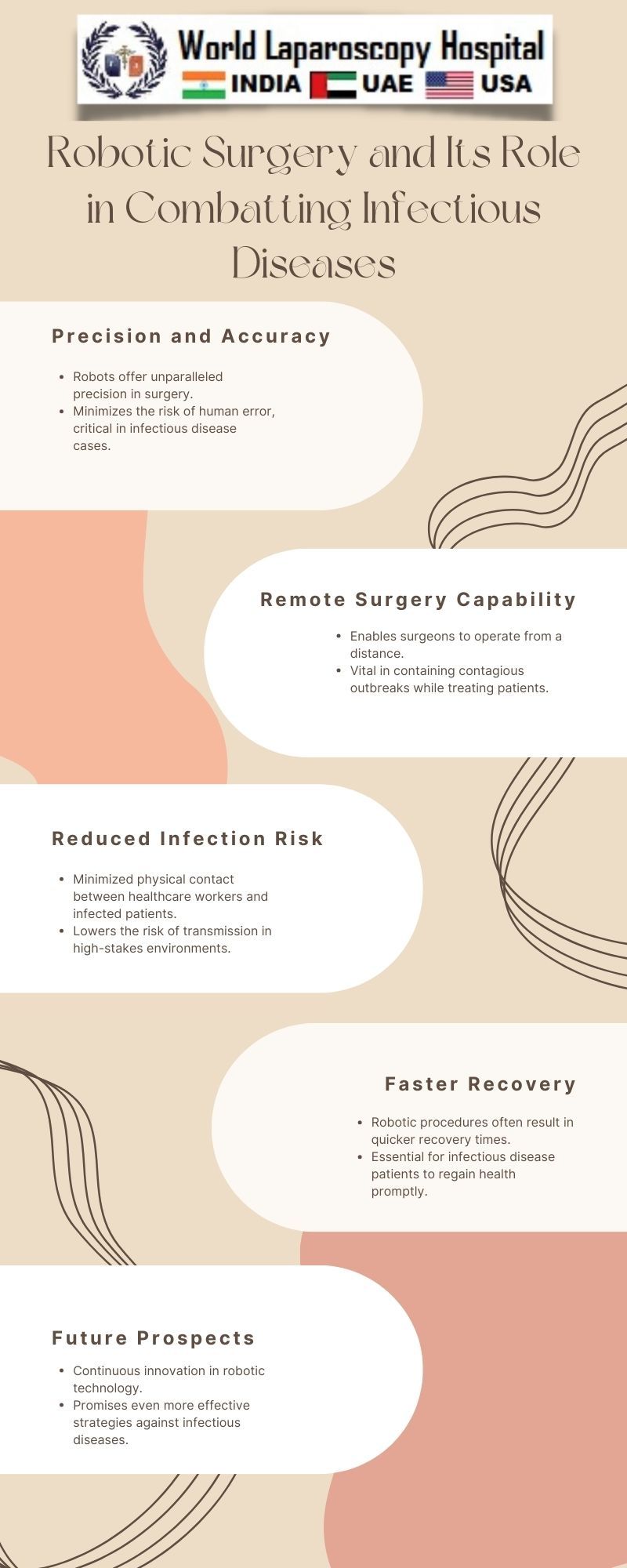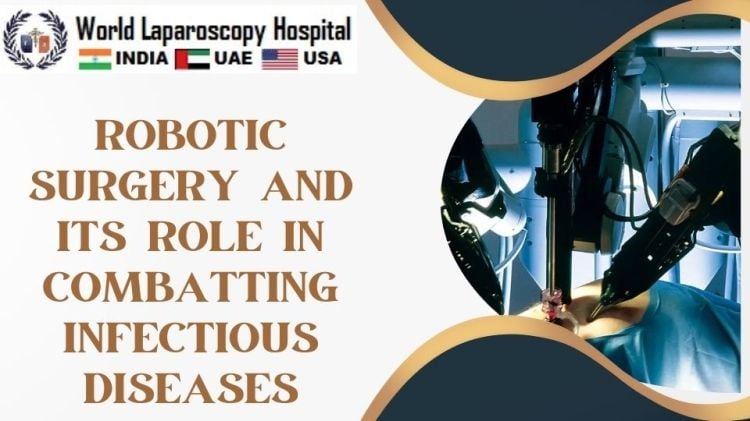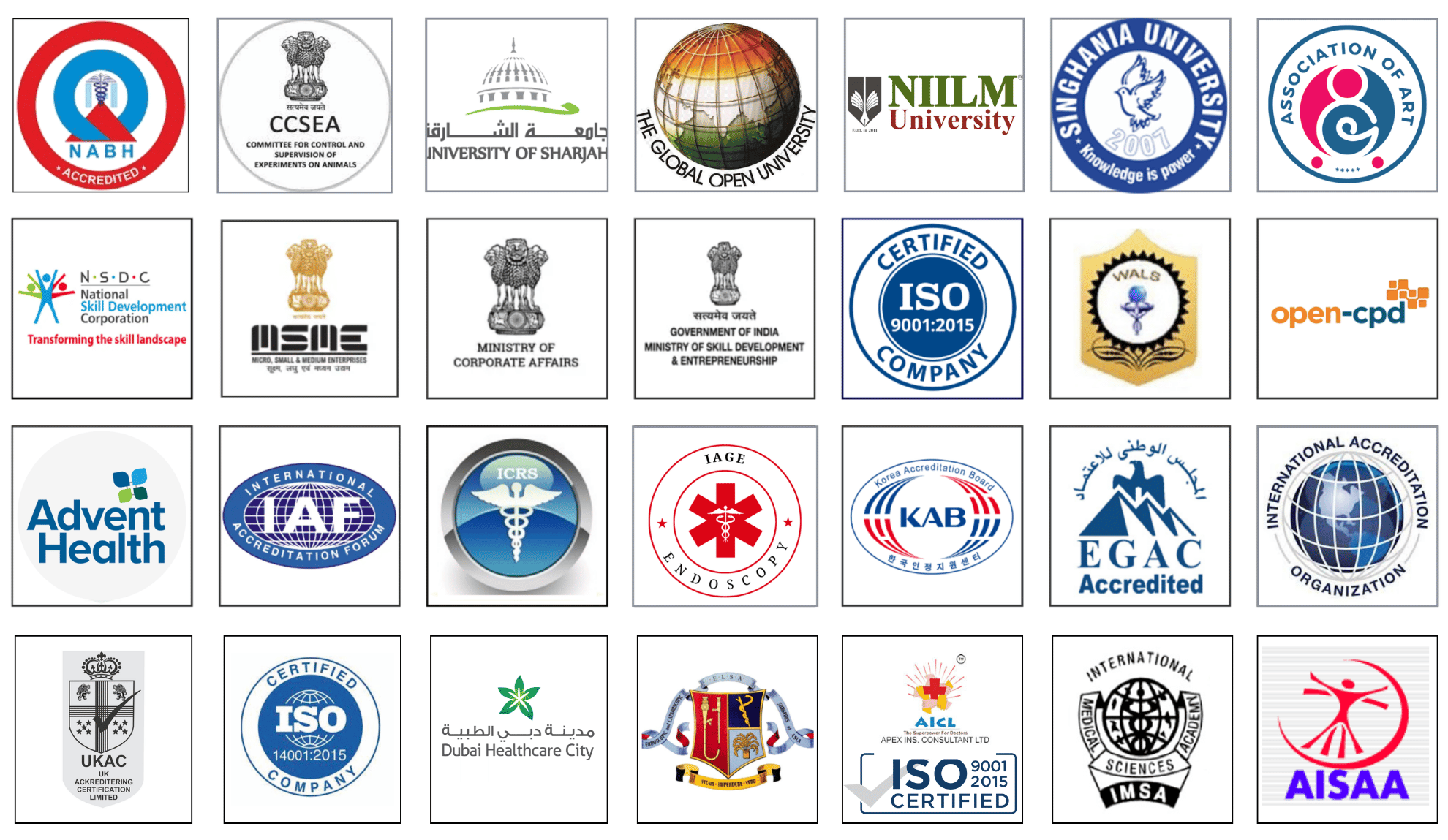Robotic Surgery and Its Role in Combatting Infectious Diseases
Introduction
In the relentless pursuit of innovative solutions to combat infectious diseases, the integration of robotic surgery has emerged as a transformative force in the medical field. This groundbreaking technology not only revolutionizes traditional surgical procedures but also plays a pivotal role in minimizing the spread of contagious pathogens. In this comprehensive exploration, we delve into the intricacies of robotic surgery, its applications in infectious disease scenarios, and the potential it holds for the future of healthcare.

Understanding Robotic Surgery
Evolution and Development
Robotic surgery, also known as robot-assisted surgery, has evolved from a concept to a sophisticated reality over the past few decades. The inception of this technology can be traced back to the early 1980s when the first robotic systems were introduced for medical applications. Since then, continuous advancements in robotics, artificial intelligence, and telecommunication technologies have propelled the field to new heights.
The core of robotic surgery lies in the use of robotic systems controlled by surgeons, often from a remote console. These systems consist of robotic arms equipped with precision tools and a camera that provides a high-definition, 3D view of the surgical site. The surgeon's movements are translated into precise actions by the robotic arms, allowing for unparalleled accuracy and dexterity.
Applications in Various Surgical Specialties
Robotic surgery has found applications across a spectrum of surgical specialties, including urology, gynecology, cardiothoracic surgery, and more. Its versatility has made it an invaluable tool for performing minimally invasive procedures, where smaller incisions lead to reduced trauma, quicker recovery times, and diminished scarring compared to traditional open surgeries.
Robotic Surgery in the Context of Infectious Diseases
Minimizing Human Contact
One of the critical advantages of robotic surgery in the context of infectious diseases is its ability to minimize human contact during medical procedures. The remote control feature enables surgeons to operate from a console located in a separate, sterile environment. This proves particularly crucial in scenarios where contagious pathogens pose a significant risk.
In infectious disease outbreaks, such as the global COVID-19 pandemic, the need to reduce healthcare workers' exposure to the virus became paramount. Robotic surgery offered a solution by allowing surgeons to maintain a safe distance while still performing intricate procedures. This not only safeguards the healthcare professionals but also minimizes the risk of cross-infection among patients.
Precision and Enhanced Visualization
Robotic surgery's high precision and enhanced visualization capabilities contribute to its effectiveness in combating infectious diseases. The 3D view provided by the robotic camera allows for meticulous examination of the surgical site, facilitating precise movements even in complex anatomical structures. This level of precision is particularly advantageous when dealing with infectious conditions that may require intricate interventions.
For example, in cases where infectious agents target specific organs or tissues, robotic surgery ensures that surgeons can navigate with utmost accuracy, minimizing collateral damage and promoting targeted treatment. The enhanced visualization also aids in identifying subtle signs of infection or complications, enabling prompt and effective responses during surgery.
Case Studies: Robotic Surgery in Infectious Disease Scenarios
Ebola Outbreak in West Africa
During the Ebola outbreak in West Africa in 2014-2016, where the highly contagious nature of the virus posed significant challenges for healthcare workers, robotic surgery demonstrated its potential as a life-saving technology. While the primary focus was on containment and treatment strategies, robotic systems were deployed to perform necessary surgeries while reducing the risk of exposure.
In this scenario, robotic surgery played a crucial role in maintaining essential medical services without compromising the safety of healthcare professionals. Procedures such as biopsies and organ surgeries were conducted with precision, allowing for accurate diagnoses and targeted treatments, all while minimizing the risk of spreading the virus.
COVID-19 Pandemic
The global COVID-19 pandemic brought unprecedented challenges to healthcare systems worldwide. As hospitals became overwhelmed with cases, the need to protect healthcare workers became a top priority. Robotic surgery emerged as a key component in ensuring the continuity of essential surgical services while adhering to strict infection control measures.
Robotic systems were employed in various COVID-19-related surgeries, including lung biopsies, thoracic surgeries, and other procedures where maintaining a sterile environment was crucial. The technology's remote capabilities allowed surgeons to operate from designated consoles, reducing the risk of exposure to the virus and ensuring the safety of both medical professionals and patients.
Challenges and Future Prospects
Cost and Accessibility
While robotic surgery presents numerous advantages, its widespread adoption faces challenges, primarily related to cost and accessibility. The initial investment and maintenance costs of robotic systems can be substantial, limiting their availability in resource-constrained healthcare settings. Efforts are underway to address these challenges and make robotic surgery more accessible globally.
In the future, advancements in technology and collaborative initiatives may lead to the development of more cost-effective robotic systems, democratizing access to this transformative technology. As accessibility increases, the potential benefits of robotic surgery in infectious disease scenarios could become more widespread.
Integration with Artificial Intelligence
The integration of artificial intelligence (AI) with robotic surgery holds immense promise for the future. AI algorithms can enhance the decision-making process during surgery, providing real-time insights and predictive analytics. In infectious disease scenarios, AI-powered robotic systems could contribute to faster and more accurate diagnoses, personalized treatment plans, and improved patient outcomes.
Moreover, AI can assist in the interpretation of medical imaging, allowing surgeons to detect subtle signs of infection or complications that may not be immediately apparent. This synergy between robotics and AI has the potential to redefine the landscape of infectious disease management.
Conclusion
Robotic surgery stands at the forefront of medical innovation, offering a transformative approach to surgical procedures and healthcare delivery. Its role in combating infectious diseases, as evidenced by experiences during outbreaks like Ebola and the COVID-19 pandemic, showcases its potential to safeguard both healthcare professionals and patients.
As technology continues to advance, addressing challenges such as cost and accessibility, and integrating artificial intelligence, robotic surgery is poised to become an even more indispensable tool in infectious disease scenarios. The journey towards a future where robotic surgery plays a central role in infectious disease management is an exciting and promising one, holding the promise of improved outcomes and a safer healthcare environment for all.






